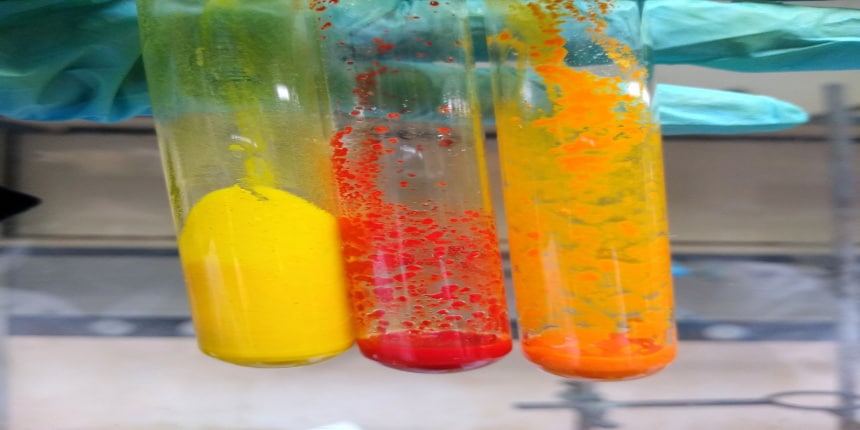DNPH Full Form
What is the full form of DNPH?
DNPH stands for “Dinitrophenylhydrazine”. It is also known as “2,4 Dinitrophenylhydrazine”. It is a reagent used in chemical analysis and detection of ketones and aldehydes. It consists of a benzene ring, two nitro groups, and a hydrazine functional group that is dissolved in a solution of methanol and sulphuric acid. It is a test used to determine ketones, aldehydes and the existence of a drug. It does not react with amides, esters, carboxylic acids and alcohols. It is a red-orange solid and is relatively sensitive to friction and shock. DNPH is a derivative of hydrogen and it is the combination of two hydrogen and two nitrogen atoms in a molecule that are linked using the triple bond. It has a strong odour which is similar to musty hay or burnt sugar and is usually supplied to reduce the explosion.
- What is the full form of DNPH?
- Structure of DNPH
- Synthesis of DNPH

Structure of DNPH
DNPH is a c-nitro compound in which phenylhydrazine is substituted by nitro groups at 2 and 4 positions. DNPH derivatives offer a better way of separating the components of a mixture of ketones and aldehydes. Here it is separated by the easy separation of 2,4 DNPH using column chromatography instead of doing this by fractional distillation.
Synthesis of DNPH
It can be prepared by the reaction of hydrazine with the 2,4 dinitrochlorobenzene. Here the electron accepting effect of the two nitro groups makes this chloride easy to replace. Laboratory test of 2,4 dinitrophenylhydrazine includes the following steps.
1) First, place 5ml of the 2,4 dinitrophenylhydrazine in the test tube.
2) Then add 10 drops of unknown compound into the test tube and tap it with the finger to mix it properly.
3) After this if crystals do not form immediately, heat it in the water bath for 5 minutes.
4) Cool this in an ice bath until the formation of crystals. Then collect the crystals by the vacuum filtration using the funnel.
5) Allow the crystals to dry in the funnel by drawing the air through the crystals and take a melting point and note that in the sheet.
6) The crystals are pure enough to get a good melting point. And if the melting point is too large, recrystallize from a minimum point of ethanol.
Frequently Asked Questions (FAQs)
Brady’s reagent is formed by the reaction of an aqueous 2,4 dinitrophenylhydrazine with the carbonyl compounds and produces a coloured precipitate. This precipitate has a sharp melting point and this melting point confirms the carbonyl compounds. It is a synthetic hydrazine derivative which is used for the qualitative research of aldehyde which is a ketone related carbonyl group.
When 2,4 dinitrophenylhydrazine reacts with aldehydes and ketones it forms orange, red or yellowish precipitates. The formation of these precipitates indicates the presence of ketones and aldehydes in dinitrophenylhydrazine.
This test works by replacing the hydrogen atoms on the hydrazine group with the ketones or aldehydes and the oxygen on ketone or aldehyde is lost in the form of water. This forms 2,4 dinitrophenylhydrazine.
2,4 dinitrophenylhydrazine solution is prepared by the mixing of 2,4 DNP with the methanol and sulphuric acid.
The disadvantages of DNPH are:
It is friction and shock sensitive
Flammable solid
Highly explosive
Combustible based on the solvent
